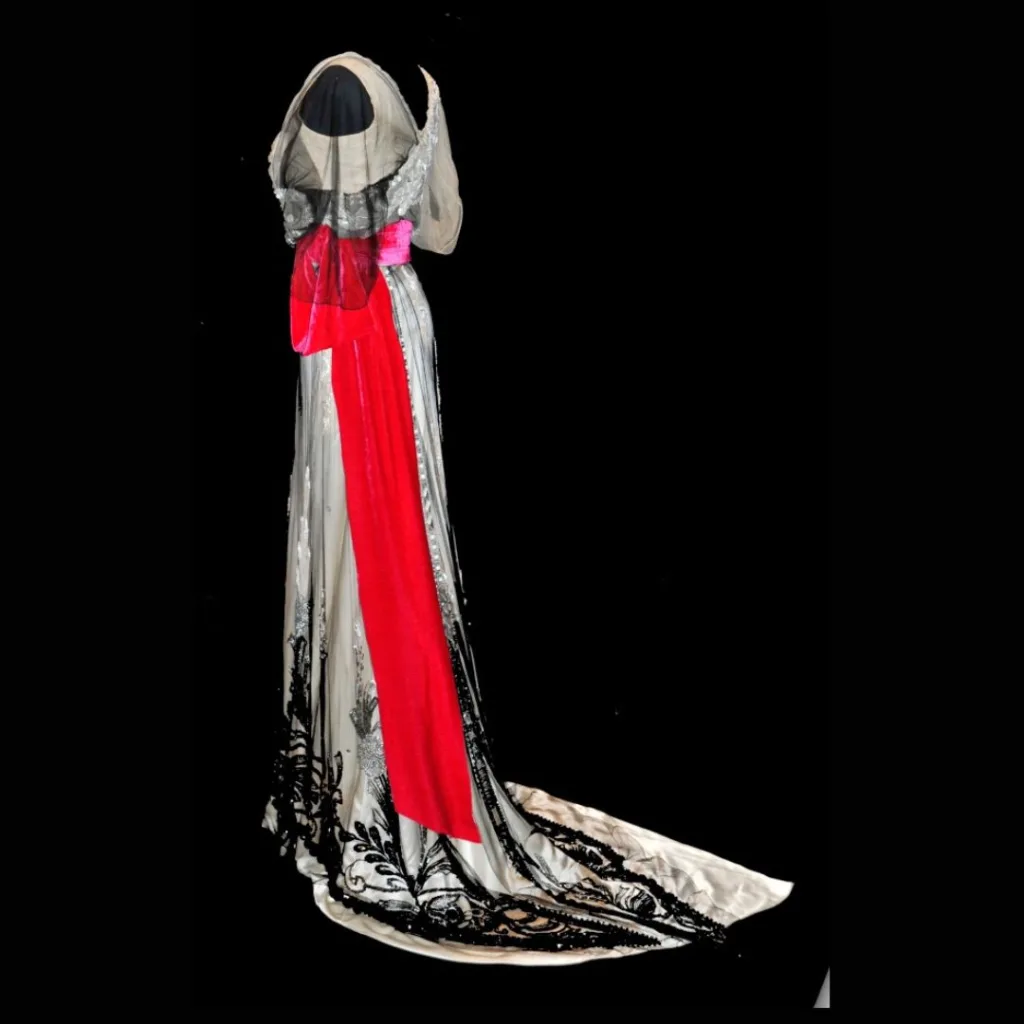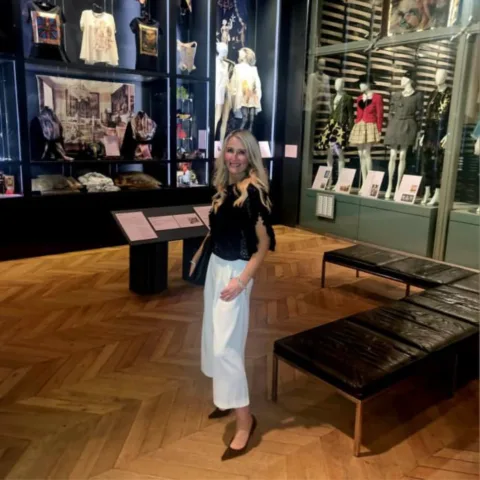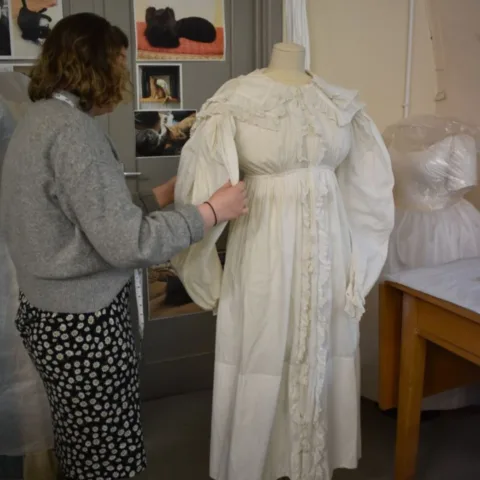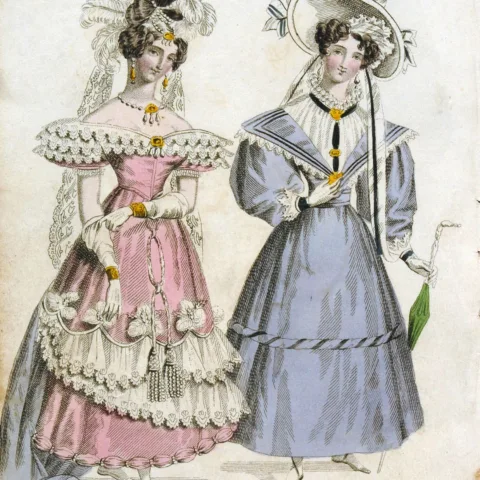The Bowes Museum Blog

A unique dress

In The Bowes Museum dress collection there is an evening gown designed by Paquin in 1911. Inside the bodice is a sturdy twill waist stay woven with Paquin’s signature in pink and ‘Hiver 1911’, indicating it was from her winter collection.
Madame Paquin (1869–1936), was a French fashion designer, known for her modern and innovative designs. In the early 1900s Jeanne Paquin had a prestige equal to that of The House of Worth, clothing the wealthy elite. She was chairman of the fashion section of 1900 Paris Exposition and has been credited with being the first female couturier. In 1913 she was the first women in her field to be awarded the Legion d’Honneur. She employed over a thousand people and made the theatre costumes designed by Bakst and Iribe.
The elaborate evening gown, with a separate bodice and trained skirt of ivory satin, has an overdress of black and ivory silk net embroidered with black, opaque and white glass beads in an asymmetrical design. The ensemble is finished off with a bright fuchsia pink silk velvet sash.
Paquin’s skill can be appreciated in this lavish creation, not only in the cut and construction but also in the contrast of fabrics. The light reflecting beadwork is seen against the vividly coloured velvet silk pile of the sash and further contrasted between the matt black net and the sheen of the ivory satin skirt, where the pointed train of both fabrics cross to form a fish tail effect. The evening gown is structurally very complex and very fragile due to the weight of the beads on the delicate silk net.
It is a good example of increasingly complex overlaid decoration at this date.
Such layers of rich fabrics embellished with bead embroidery are typical of the pre-war development of luxury evening wear, in which both Paquin and Worth excelled. They chose a mix of the costliest, delicate fabrics to create the style in vogue. The dress exemplifies the desire for new seasonal fashions and was probably intended to be worn once for a special occasion.
It was said to have been worn by Alice Mary Lyall Brandreth, during the time of her marriage to John George Butcher. He was the Member of Parliament for York and they lived in Kensington, London and Riccall Hall, near York. In 1918 he became Sir John Butcher (Baronet) and received the title Baron Danesfort in 1924, after leaving parliament. Danesfort is the name of his family home in Ireland. He was Alice’s second husband, and it was through her son from her first marriage, Geoffrey Gordon (Bishop of Jarrow) and his wife, (Martha Sabrina Brinton, daughter of John Brinton, carpet manufacturer) that this dress was bequeathed to the museum via the National Art Collections Fund in 1963. It is part of a larger bequest of furniture and embroideries, said to have belonged to Alice, Lady Danesfort.
Alice was born in Simla in India and married J.E.H Gordon in 1878. He was killed in a riding accident in 1893. She married her second husband, John Butcher in 1898 and both weddings took place in Kensington. Both her husbands were likely to have been friends; of the same age and were at Cambridge together in the early 1870s.
There are still many questions to answer, including the possibility that this dress could have been worn by Lady Danesfort’s daughter-in-law, Martha Brinton. But, more tantalising, at what special occasion would this evening dress have been worn, in the winter of 1911?
It was George V’s coronation in June that year. The Delhi Durbar in December 1911 was ruled out as John Butcher was busy in England and Ireland with political meetings to do with the Home Rule question at that time. Unless Alice returned alone to the country of her birth?
This custom-made gown would have probably been purchased from Madame Paquin in London, rather than in Paris. Paquin opened her salon at 93 Dover Street, London, in 1897. She was the first French couturier to found fashion houses abroad. An astute businesswoman, she also opened houses in Buenos Aires and Madrid and was the first to promote her collections by touring models in America.



In the winter of 2011, after some conservation, the gown was displayed for the first time since it was donated in 1963, to celebrate its centenary. It is currently in storage, due to the instability of the fabrics and heavy beads sewn to the fragile silk lace. The original brilliant pink silk velvet sash had completely rotted, due to the chemical dye. In a collaboration with the Fashion department at Northumbria University, a reproduction sash was made for the display.
Examples by Paquin of this date are very rare, so the fascinating story behind this unique, fragile gown is wonderful to have and certainly worth sharing.
Blog by: Joanna Hashagen, Fashion & Textile Curator at The Bowes Museum











